Rachmaninoff D minor Sonata Op 28 II Lento Zoltán Kocsis with sheet music
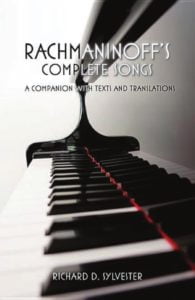
Piano Sonata No. 1 in D minor, Op. 28, is a piano sonata by Sergei Rachmaninoff, completed in 1908. It is the first of three “Dresden pieces”, along with Symphony No. 2 and part of an opera, which were composed in the quiet city of Dresden, Germany.
It was originally inspired by Goethe‘s tragic play Faust; although Rachmaninoff abandoned the idea soon after beginning composition, traces of this influence can still be found. After numerous revisions and substantial cuts made at the advice of his colleagues, he completed it on April 11, 1908. Konstantin Igumnov gave the premiere in Moscow on October 17, 1908. It received a lukewarm response there, and remains one of the least performed of Rachmaninoff’s works.
It has three movements, and takes about 35 minutes to perform. The sonata is structured like a typical Classical sonata, with fast movements surrounding a slower, more tender second movement. The movements feature sprawling themes and ambitious climaxes within their own structure, all the while building towards a prodigious culmination. Although this first sonata is a substantial and comprehensive work, its successor, Piano Sonata No. 2 (Op. 36), written five years later, became the better regarded of the two. Nonetheless, it, too, was given serious cuts and opinions are mixed about those.
Background
In November 1906, Rachmaninoff, with his wife and daughter, moved to Dresden primarily to compose a second symphony to diffuse the critical failure of his first symphony, but also to escape the distractions of Moscow. There they lived a quiet life, as he wrote in a letter, “We live here like hermits: we see nobody, we know nobody, and we go nowhere. I work a great deal,” but even without distraction he had considerable difficulty in composing his first piano sonata, especially concerning its form.
The original idea for it was to be a program sonata based on the main characters of the tragic play Faust by Johann Wolfgang von Goethe: Faust, Gretchen, and Mephistopheles, and indeed it nearly parallels Franz Liszt‘s own Faust Symphony which is made of three movements which reflect those characters. However, the idea was abandoned shortly after composition began, although the theme is still clear in the final version.
Rachmaninoff enlisted the help of Nikita Morozov, one of his classmates from Anton Arensky‘s class back in the Moscow Conservatory, to discuss how the sonata rondo form applied to his sprawling work. At this time he was invited, along with Alexander Glazunov, Nikolai Rimsky-Korsakov, Alexander Scriabin, and Feodor Chaliapin, to a concert in Paris the following spring held by Sergei Diaghilev to soothe France–Russia relations, although Diaghilev hated his music. Begrudgingly, Rachmaninoff decided to attend only for the money, since he would have preferred to spend time on this and his Symphony No. 2 (his opera project, Monna Vanna, had been dropped). Writing to Morozov before he left in May 1907, he expressed his doubt in the musicality of the sonata and deprecated its length, even though at this time he had completed only the second movement.
On returning to his Ivanovka estate from the Paris concert, he stopped in Moscow to perform an early version of the sonata to contemporaries Nikolai Medtner, Georgy Catoire, Konstantin Igumnov, and Lev Conus. With their input, he shortened the original 45-minute-long piece to around 35 minutes. He completed the work on April 11, 1908. Igumnov gave the premiere of the sonata on October 17, 1908, in Moscow, and he gave the first performance of the work in Berlin and Leipzig as well, although Rachmaninoff missed all three of these performances.
Composition

Movement 1.
The piece is structured as a typical sonata in the Classical period: the first movement is a long Allegro moderato (moderately quick), the second a Lento (very slow), and the third an Allegro molto (very fast).
- Allegro moderato (in D minor, ends in D major) The substantial first movement Allegro moderato presents most of the thematic material and motifs revisited in the later movements. Juxtaposed in the intro is a motif revisited throughout the movement: a quiet, questioning fifth answered by a defiant authentic cadence, followed by a solemn chord progression. This densely thematic expression is taken to represent the turmoil of Faust’s mind. The movement closes quietly in D major.
- Lento (in F major) In key, the movement pretends to start in D major before settling in the home key of F major. Although the shortest in length and performance time, the second movement Lento provides technical difficulty in following long melodic lines, navigating multiple overlapping voices, and coherently performing the detailed climax, which includes a small cadenza.
- Allegro molto (in D minor) Ending the sonata is the furious third movement Allegro molto. Lacking significant thematic content, the movement serves rather to exploit the piano’s character, not without expense of sonority. The very first measures of the first movement are revisited, and then dissolves into the enormous climax, a tour de force replete with full-bodied chords typical of Rachmaninoff, which decisively ends the piece in D minor.
Reception
Rachmaninoff played early versions of the piece to Oskar von Riesemann (who later became his biographer), who did not like it. Konstantin Igumnov expressed interest upon first hearing it in Moscow, and following his suggestion Rachmaninoff cut about 110 bars.
The sonata had a mediocre evaluation after Igumnov’s premiere in Moscow. Nikolai Rimsky-Korsakov had died several months previously, and the burden of heading Russian classical music had fallen on this all-Rachmaninoff programme of October 17, 1908. Although the concert, which also included Rachmaninoff’s Variations on a Theme of Chopin (Op. 22, 1903), was “filled to overflowing”, one critic called the sonata dry and repetitive, however redeeming the interesting details and innovative structures were.
Lee-Ann Nelson, via her 2006 dissertation, noted that Rachmaninoff’s revisions are always cuts, with the material simply excised and discarded. The hypothesis is that the frequency of negative responses to many of his pieces, not just the response to the first symphony, led to a deep insecurity, particularly with regard to length. The musicologists Efstratiou and Martyn argued against, for instance, the cuts made to the second sonata on a formal basis. Unlike other pieces, such as the second piano sonata and the fourth piano concerto, no uncut version of this piece is currently known to be extant.
Today the sonata remains less well-known than Rachmaninoff’s second sonata, and is not as frequently performed or recorded. Champions of the work tend to be pianists renowned for their large repertoire. It has been recorded by Eteri Andjaparidze, Vladimir Ashkenazy, Boris Berezovsky, Idil Biret, Sergio Fiorentino, Leslie Howard, Ruth Laredo, Valentina Lisitsa, Nikolai Lugansky, Olli Mustonen, John Ogdon, Michael Ponti, Santiago Rodriguez, Alexander Romanovsky, Howard Shelley, Daniil Trifonov, Xiayin Wang, and Alexis Weissenberg. Lugansky performs the piece regularly.
Browse in the Library:
| Artist or Composer / Score name | Cover | List of Contents |
|---|---|---|
| Trinity Classical Guitar 2020-2023 INITIAL |
 |
|
| Trinity Classical Guitar Grade 05 2010-2015 |
 |
|
| Trinity Electronic Keyboard Grade 1 Pieces & Technical work |
 |
Trinity Electronic Keyboard Grade 1 |
| Trinity Electronic Keyboard Grade 2 Pieces & Technical work |
 |
Trinity Electronic Keyboard Grade 2 |
| Trinity Electronic Keyboard Grade 6 Pieces & Technical work |
 |
Trinity Electronic Keyboard Grade 6 |
| Trinity Electronic Keyboard Grade 7 Pieces & Technical work |
 |
Trinity Electronic Keyboard Grade 7 |
| Trinity Electronic Keyboard Initial Grade 2019-2022 |
 |
|
| Trinity Electronic Keyboard Initial Pieces and Technical Work 2015-2018 |
 |
|
| Trinity Electronic Keyboard Sample Booklet |
 |
|
| Trinity Guitar 2016 2019 Grade 1 |
 |
|
| Trinity Guitar 2016 2019 Grade 2 |
 |
|
| Trinity Guitar 2016 2019 Grade 3 |
 |
|
| Trinity Guitar 2016 2019 Grade 4 |
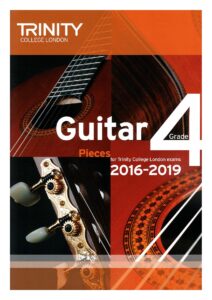 |
|
| Trinity Guitar 2016 2019 Grade 5 |
 |
|
| Trinity Guitar 2016 2019 Grade 6 |
 |
|
| Trinity Guitar 2016 2019 Grade 7 |
 |
|
| Trinity Guitar 2016 2019 Grade 8 |
 |
|
| Trinity Guitar 2016 2019 Initial |
 |
|
| Trinity Guitar Initial to Grade 5 Scales Arpeggios and studies |
 |
|
| Trinity Piano Grade 1 Pieces and exercises 2018 2020 |
 |
Trinity Piano Grade 1 Pieces and exercises 2018 2020 |
| Trinity Piano Grade 2 Pieces and exercises 2018 2020 |
 |
|
| Trinity Piano Grade 3 Pieces and exercises 2018 2020 |
 |
|
| Trinity Piano Grade 5 Pieces and exercises |
 |
|
| Trinity Piano Grade 6 (2021-2023) Extended Edition |
 |
Trinity Piano Grade 6 (2021-2023) Extended Edition |
| Trinity Piano Grade 6 Pieces and exercises |
 |
|
| Trinity Piano Initial Piano 2018-2020 | Trinity Piano Initial Piano 2018-2020 | Trinity Piano Initial Piano 2018-2020 |
| Trinity Piano Pieces And Exercises Grade 1 2015 2017 |
 |
Trinity Piano Pieces And Exercises Grade 1 2015 2017 |
| Trinity Piano Pieces And Exercises Grade 2 2015 2017 |
 |
Trinity Piano Pieces And Exercises Grade 2 2015 2017 |
| Trinity Piano Pieces Grade 1 2021-2023 |
 |
Trinity Piano Pieces Grade 1 2021-2023 |
| Trinity Piano Pieces Grade 2 12 Piano Pieces 2021-2023 |
 |
Trinity Piano Pieces Grade 2 12 Piano Pieces 2021-2023 |
| Trinity Rock and Pop Guitar Grade 8 (Contemporary and classic songs) with Tablature |
 |
Trinity Rock and Pop Guitar Grade 8 (Contemporary and classic songs) |
| Trinity Sight Reading Book 1 Sound at sight Piano |
 |
|
| Trinity Theory Of Music Workbook Grade 1 |
 |
Trinity Theory Of Music Workbook Grade 1 |
| True Silent Hill-2- Akira-Yamaoka |
 |
|
| Truman Show, The Reunion Philip Glass |
 |
|
| Trumpet Method Allen Vizzutti Trumpet Method Book 1 2 3 Complete |
 |
|
| Trumpet Method Anthony Plog Method For Trumpet Complete 7 books |
 |
|
| Trumpet Omnibook For B Flat Instruments Transcribed Exactly From Artist Recorded Solos |
 |
Trumpet Omnibook For B Flat Instruments Transcribed Exactly From Artist Recorded Solos |
| Trumpet Solos, Easy (The Canadian Brass) |
 |
|
| Trumpet, The (John Wallace, Alexander McGrattan) Yale Musical Instruments Series (Book) |
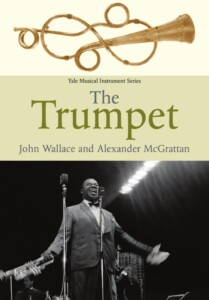 |
|
| Tsim Sha Tsui Stroll (Lust, Caution OST) Alexandre Desplat | ||
| Tu vuo’ fa’ l’Americano (Renato Carosone) | ||
| Tubular Bells (Mike Oldfield) |
 |
|
| Tubular Bells Intro – Mike Oldfield (Musescore File).mscz | ||
| Tuck Andress Europa by Carlos Santana guitar TABs |
 |
|
| Tuck Everlasting (The Musical) Music By Chris Miller Lyrics By Nathan Tysen (Piano Vocal Selections) |
 |
Tuck Everlasting (The Musical) Music By Chris Miller Lyrics By Nathan Tysen (Piano Vocal Selections) |
| Tunes For Ten Fingers A First Piano Book By Pauline Hall (Oxford) |
 |
|
| TV and Movie Themes (Piano, Vocal, Guitar) |
 |
TV and Movie Themes (Piano, Vocal, Guitar) |
| TV Detective Themes For Solo Piano |
 |
TV Detective Themes For Solo Piano |
| TV Fake Book, The |
 |
TV Fake Book, The |
| TV Songs Big Book Of TV Theme Songs 2nd Edition Piano Vocal Guitar |
 |
TV Songs Big Book Of TV Theme Songs 2nd Edition Piano Vocal Guitar Contents |
| Twelve Etudes Op 8 No 12 Scriabin (Musescore File).mscz | ||
| Twenty One Pilots – Goner |
 |
|
| Twenty One Pilots – Heathens – Piano |
 |
|
| Twenty One Pilots – Stressed Out Sheet Music | Twenty One Pilots – Stressed Out Sheet Music | |
| Twenty-Four Italian Songs And Arias Medium High |
 |
Twenty-Four Italian Songs And Arias, Medium High |
| Twice – Knock Knock Piano Solo |
 |
|
| Twilight – The Score – Carter Burwell |
 |
Twilight – The Score – CArter Burwell |
| Twilight saga – New Moon Music Score for Piano Solo Alexandre Desplat |
 |
Twilight.New.Moon.Music.Score.for.Piano.Solo).Alexandre.Desplat |
| Twin Peaks – Audreys Dance Angelo Badalamenti | ||
| Twin Peaks – Laura Palmers Theme Angelo Badalamenti | ||
| Twin Peaks – Twin Peaks Theme Angelo Badalamenti | ||
| Twinkle Twinkle Little Star Variations Suzuki Guitar Vol. 1 (Musescore File).mscz | ||
| Two Socks theme (Dances with Wolves OST) John Barry | ||
| Two Steps From Hell Blackheart Piano Sheet Music by Thomas Bergersen |
 |
|
| Two Steps From Hell Flight Of The Silverbird (Piano Solo) Thomas Bergersen |
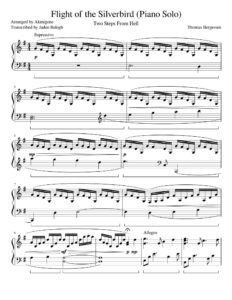 |
|
| Two Steps from Hell Invincible Sheet Music |
 |
|
| Two Steps From Hell Star Sky by Thomas Bergersen |
 |
|
| Txarango – La Dansa Del Vestit En Fa M |
 |
|
| Tymoczko, Prof. Dimitri MUSXI 105 Handouts 1 | Book Theory | |
| Tymoczko, Prof. Dimitri MUSIC 106 Handouts | Book Theory | |
| U2 The Piano Collection |
 |
U2 The Piano Collection |
| U2 – All I Want Is U | ||
| U2 – Best Of – (Guitar Tab Songbook) |
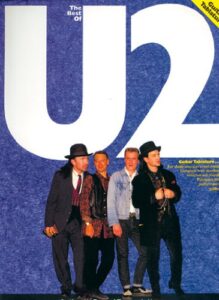 |
U2 – Best Of – (Guitar Tab Songbook) Contents — U2 – Best Of – (Guitar Tab Songbook) |
| U2 – How To Dismantle An Atomic Bomb (guitar tab songbook) |
 |
U2 – How To Dismantle An Atomic Bomb (guitar tab songbook) Contents — U2 – How To Dismantle An Atomic Bomb (guitar tab songbook) |
| U2 – October | ||
| U2 – Stuck In A Moment You Cant Get Out Of | ||
| U2 – The Best of 1990-2000 (Songbook) – U2 sheet music |
 |
U2 – The Best of 1990-2000 (Songbook) – U2 sheet music |
| U2 – The Best Of U2 (recorded versions) Guitar with TABs |
 |
U2 – Best Of – (Guitar Tab Songbook) |
| U2 – The Sweetest Thing | ||
| U2 Rock Score 5 Great Songs |
 |
|
| U2 The Joshua Tree Guitar Songbook with TABs |
 |
U2 The Joshua Tree Guitar Songbook |
| U2 WAR |
 |
U2 WAR |
| UB40 The Best Of – Piano, vocal & Guitar Songbook |
 |
UB40 The Best Of – Piano, vocal & Guitar Songbook |
| Ubi Caritas – Ola Gjeilo (Musescore File).mscz | ||
| Ubi Caritas -Ola Gjeilo-with piano improvisation |
 |
|
| Ukelele Chord Finder – Easy to use Guide |
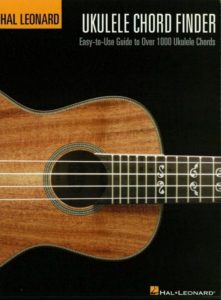 |
|
| Ukrainian folk song.mscz | ||
| Ukulele – 3-Chord Christmas Carols For Ukulele (Guitar Songbook Sheet Music) 30 Holiday Favorites With Just 3 Chords |
 |
Ukulele – 3-Chord Christmas Carols For Ukulele (Guitar Songbook Sheet Music) 30 Holiday Favorites With Just 3 Chords |
| Ukulele – Simple Songs For Ukulele (Guitar Sheet Music) |
 |
Ukulele – Simple Songs For Ukulele (Guitar Sheet Music) |
| Ukulele – The Daily Ukulele (Songbook) – Jim Beloff Guitar Sheet Music |
 |
|
| Ukulele for Kids Songbook Ukulele Method |
 |
|
| Ultimate 80s Songs |
 |
Ultimate 80s Songs |
| Ultimate Guitar Chord-Book |
 |
|
| Ultimate Guitar Songbook with TABs |
 |
Ultimate Guitar Songbook, The (110 songs) |
| Ultimate Latin Piano Riffs – Carlos Campos & Andrew D.Gordon |
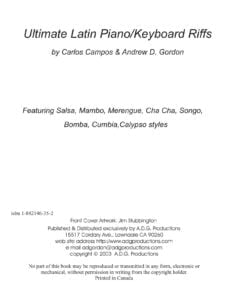 |
Ultimate Latin Piano Riffs – Carlos Campos & Andrew D.Gordon |
| Umberto Tozzi Gloria – Piano Vocal |
 |
|
| Un air de liberté (Et maintenant on va où OST) Khaled Mouzanar | ||
| Un anno d’amore (Mina) | ||
| Un Homme et son Chien (Philippe Rombi) | ||
| Un Monstre À Paris La Seine And I By Vanessa Paradis & Sean Lennon (Piano Vocal) |
 |
|
| Un Monstre à Paris – La Seine And I by Vanessa Paradis & Sean Lennon (Piano vocal).mscz | ||
| Una Mattina (Musescore File).mscz | ||
| Unchained Melody (Sheet Music) – The Righteous Brothers |
 |
|
| Under The Sea Ukulele Guitar From The Little Mermaid |
 |
|
| Under The Sea – Ukulele Guitar.mscz | ||
| Understanding chord progressions for Guitar by Arnie Berle |
 |
Understanding chord progressions for Guitar |
| Understanding The Fundamentals Of Classical Music Course Guide Modern Scholar (Book) |
 |
|
| Undertale Full OST – Toby Fox |
 |
|
| Undertale Megalovania Piano – Toby Fox |
 |
|
| Undertale – Home |
 |
|
| Undertale – Megalovania | ||
| Undertale OST – Hopes and Dreams Save the World |
 |
|
| UNDERTALE OST – Hopes and Dreams Save the World Piano Solo.mscz | ||
| Undertale OST – Hopes and DreamsSave the World.mscz | ||
| Undertale Ost – Nyeh Heh Heh! Bonetrousle |
 |
|
| Une Heure de Plus (Erik Berchot) | ||
| Unfaithful (Rihanna) | ||
| Unfinished Music – Richard Kramer |
 |
|
| Unforgettable – Irving Gordon (Nat King Cole Song) (Musescore File).mscz |
